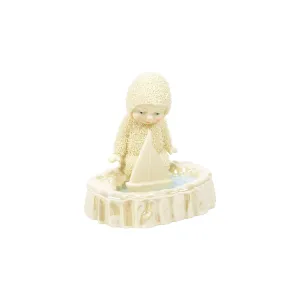A very fine example of a cremation urn, most probably from the Etruscan city of Chiusi. The fourth century BCE saw the agricultural and trading center of Chiusi flourish, allowing more people to afford the luxury of a formal burial, something previously only the wealthy elite had access to. Cremation urns thus came into fashion; the rectangular boxes were decorated with mold-made relief scenes, while the lids depicted three-dimensional figures of the deceased, fully recumbent on a kline (banqueting couch). the name of the deceased was inscribed across the top of the box or along the edge of the lid, written from right to left in the Etruscan script. In this example, the writing partially remains along the top edge of the box.
The relief scenes varied in subject matter, but a few themes seemed to be the most popular and reoccurred on several urns. This example is of one such reoccurring scene, identified as the Greek myth of Echetlos, a hero of the Battle of Marathon (490 BC) who slaughtered Persian enemies with his plow, but it may represent a local Etruscan hero myth. At far left a nude warrior in a cape and crested helmet advances, shield in his left hand and sword in his right. Beneath him a warrior in cuirass and cape kneels on one knee, protecting himself with his shield and preparing to strike a blow with his sword. The aggressor to his right is a nude male seen from behind, a sash around his waist. He wields a large plow and nearly stabs the crouching figure in the head with it. To the far right is another warrior in a cuirass, holding his shield in front of him and raising his arm back.
For a parallel example, see: Metropolitan Museum of Art accession number 96.9.220a, b
Reference: Theresa Huntsman, "Hellenistic Etruscan Cremation Urns from Chiusi," Metropolitan Museum vol. 49, 2014, pgs. 141 - 150.
Dimensions: Base Height: 8 1/2 inches (21.5 cm), Length: 13 1/2 inches (34.3 cm), Width: 7 inches (17.7 cm)
Lid Height: 5 1/2 inches (13.97 cm), Length: 15 3/4 inches (40 cm), Width: 8 inches (20.32 cm)
Condition: With minor surface loss, intact and in good condition overall. With red, yellow, and blue polychrome remaining.
Provenance: Phillip Adams private collection, Sydney Australia acquired from the Museum of Classical Antiquities in 1976, and previously in the museum collection from the early 1950s.




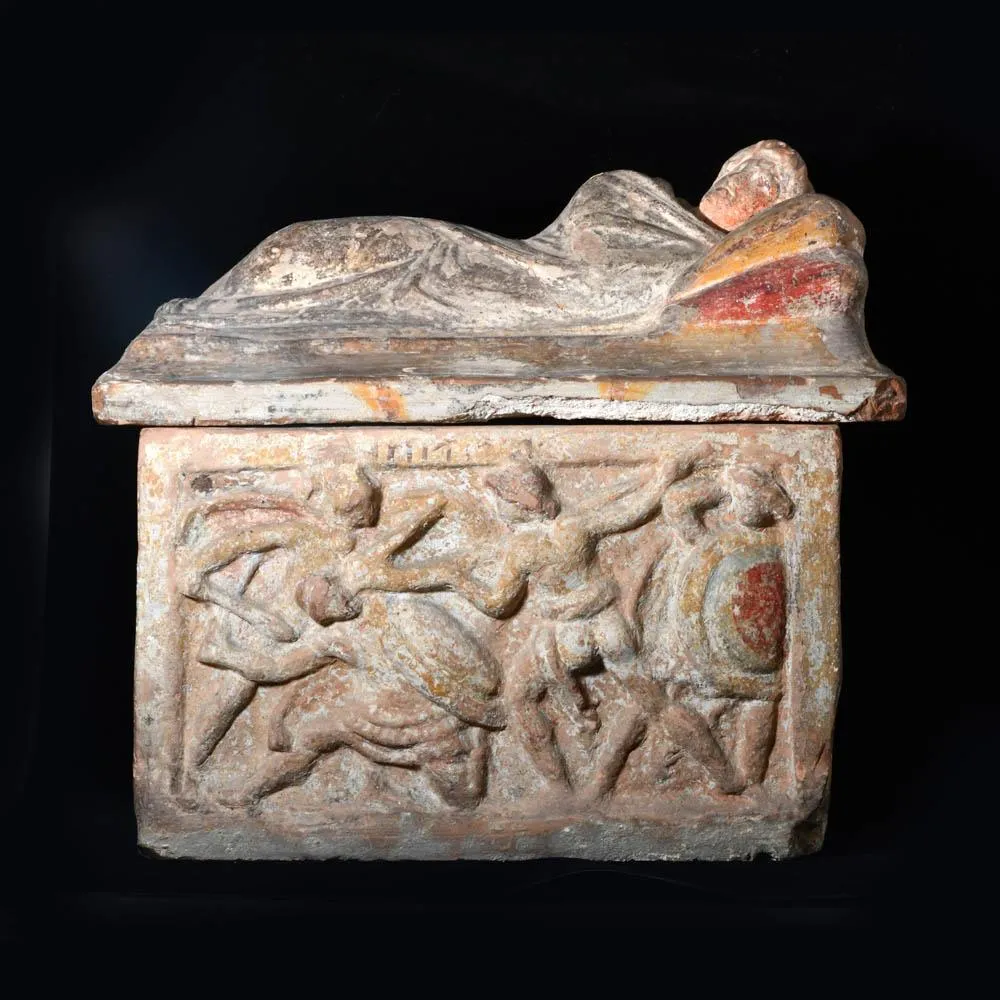




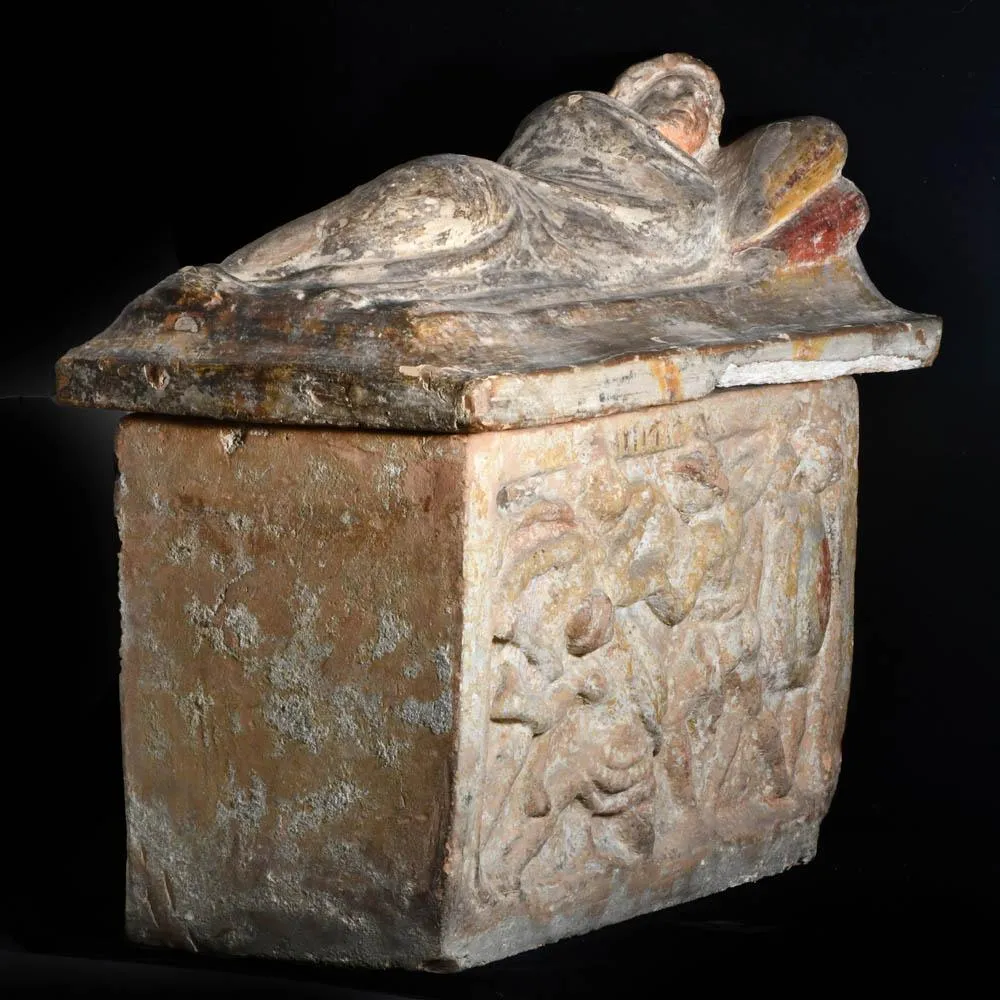


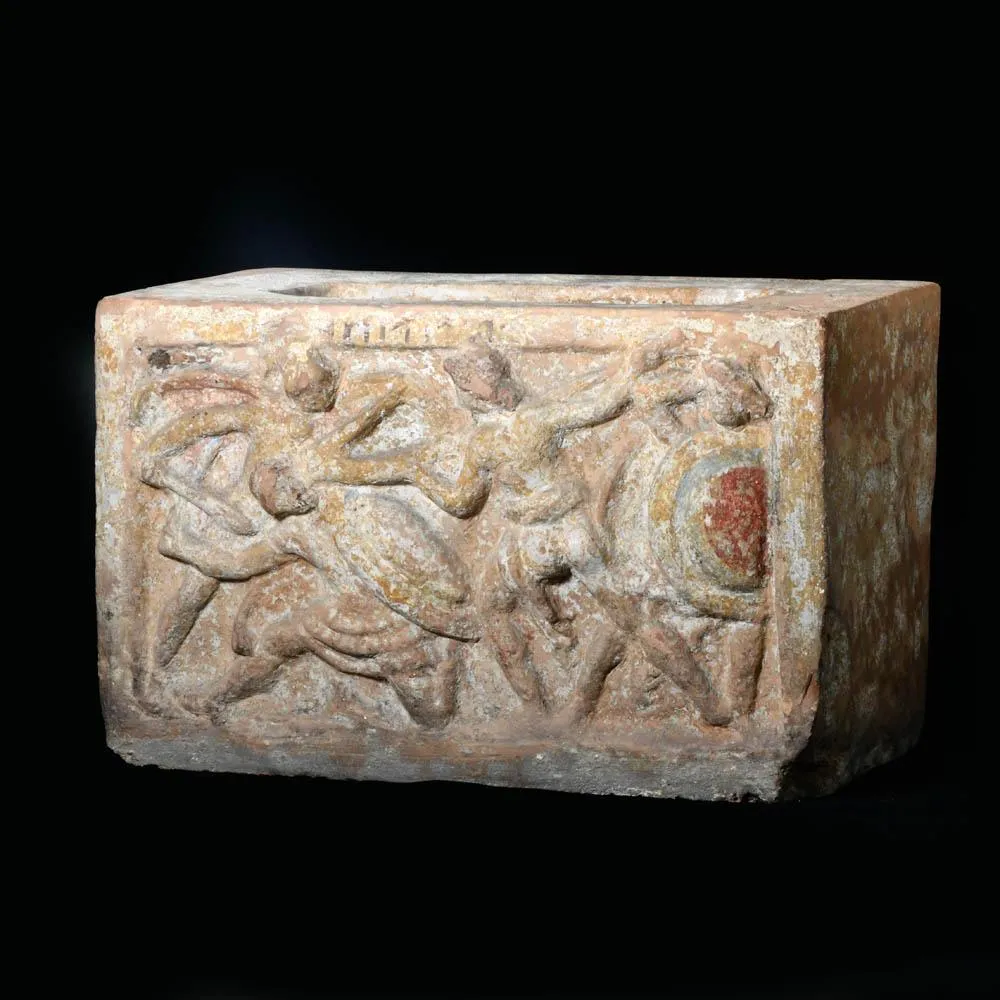

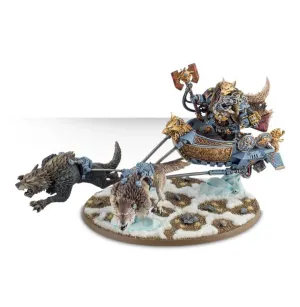




![Figma EX-057 Rider/Altria Pendragon Alter (Swimsuit Ver.) from Fate/Grand Order Max Factory [IN STOCK] Figma EX-057 Rider/Altria Pendragon Alter (Swimsuit Ver.) from Fate/Grand Order Max Factory [IN STOCK]](https://www.mystaryitems.shop/image/figma-ex-057-rideraltria-pendragon-alter-swimsuit-ver-from-fategrand-order-max-factory-in-stock_9Qq1xx_300x.webp)
